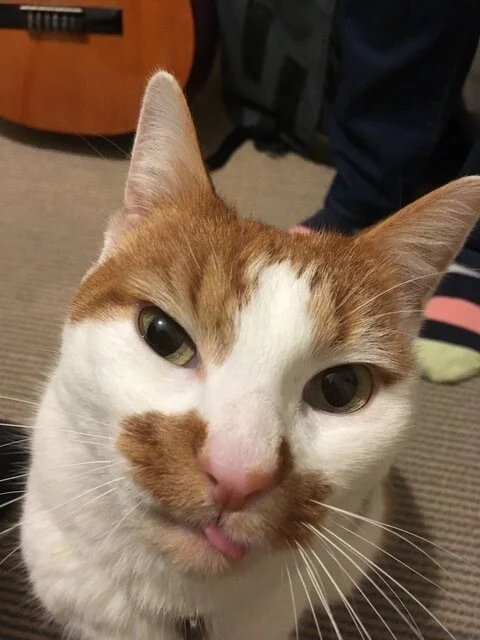The Ambiguity of Meaning — The poetry of E. E. Cummings
I first became aware of the poetry of E. E. Cummings during my second year of university when my lecturer used his poem anyone lived in a pretty how town as an example (of what specifically, I cannot remember. Something to do with language and substituting certain types of words for others) in my stylistics class. Since then, I have been interested in his playful use of language and layout, and wrote my dissertation on the ways punctuation creates and changes meaning, using Cummings’s poems as examples.
Edward Estlin (e e) Cummings was an American poet, novelist, playwright, essayist and artist born in 1894 in Cambridge, Massachusetts. He is often thought of as one of the most important poets of the 20th century and is known for his avant-garde poetic style.
There are many things about Cummings’s technique that can make his poems seem ambiguous in meaning or subvert our ideas of how meaning is portrayed. He employs innovative tricks in expressing or illustrating imagery or feeling. For instance, he will sometimes lay out words on the page that imitate the words themselves, as in the poem i will be, where the word “expiring” has a space between each letter, evoking the act of trailing off or running out of time. Similarly, in the poem l(a, the word “falls” is spread over three lines, the letters falling down the page. In other ways, punctuation seems to illustrate the words themselves, as in the use of a closed bracket at the end of i will be: “m oo / )n”. The bracket is evocative of an image of the moon. These devices disrupt our reading of the poems because they look different to how we would expect them to, and in doing so, forces the reader to look beyond the surface level of the poem, beyond the structure and content of each line. They are almost like puzzles that you have to piece back together to gain understanding.
In some of his more experimental poems, Cummings does not use a lot of punctuation or capital letters (just as he often did not capitalise his own name), or else he used them in unconventional ways. By not using punctuation in the ways we would expect, he causes the meanings in the poems to be ambiguous and therefore open to interpretation. This is evident in lines seven to eleven of i will be:
the curvedship of
Her —
… KIss her:hands
will play on, mE as
Here, it is not clear which words are modifying which because Cummings has chosen to use a dash, capital letters, ellipsis, a colon and a comma in places that disrupt conventional syntax. There are a few ways these lines can be interpreted. Two examples are:
“the curved ship of her kiss, her hands will play on me as…”
“the curved ship of her. Kiss her. Hands will play on. Me as…”
In this way, Cummings is allowing the reader the space and freedom to read the poems as they wish. There is no right or wrong way, because the punctuation in meaningless in this context; it doesn’t aid comprehension as it should. In the same way Cummings has subverted our idea of meaning created through punctuation, he also uses other ways to playfully illustrate of create new meanings, as in the poem l(a. This poem is very short, consisting of one phrase (“a leaf falls”) tucked into the word “loneliness”. We may infer that the act of a leaf falling is equivalent to loneliness or conjures a feeling of loneliness, or is in fact the same thing, as the poem refers to “a leaf” rather than “leaves”.
Sometimes the meanings of poems can be inhibited by a tendency to do away with the usual spaces between letters or words. It is not always easy to decipher where one word ends and another begins, as in the lines “her / flesh / Came / at / meassandca V / ingint / oA / chute” from her / flesh / Came / at. It may take a little while to work out that the letters can be made into the sentence “her flesh came at me as sand caving into a chute”. Similarly, in the poem !blac, meaning can be difficult to grasp because of spacing, line breaks, capitalisation and punctuation. The way Cummings places letters and units together on the page can lead a reader astray. For instance, the line “a:;go”, because “ago” is a word we recognise, even if it is broken up by a colon and semicolon. But in fact, if you read the full poem, it seems to make the most sense for “go” to be put together with the ‘e’ and ‘s’ on the next two lines to form “goes”. At the beginning of the poem, “whi” is put in a unit on its own, contained within brackets, but when placed with “te” which appears on the next line, creates the word “white”. At the end of !blac are the lines “s wh / IrlI / n / .g”. Because Cummings has used capital ‘i’s instead of lowercase ones, it makes it more difficult to distinguish them from the ‘l’s they stand beside. This creates a jarring, even though we know from the other letters that the word must be “whirling”.
There are many innovative and interesting ways Cummings uses punctuation, space, and line breaks in his poems to challenge and play with our concept of what is conventional within language and we can glean meaning from poetry.
Rochelle Roberts
twitter @rochellerart | instagram @rocheller
Illustration: Harry Pye & Chris Tosic



